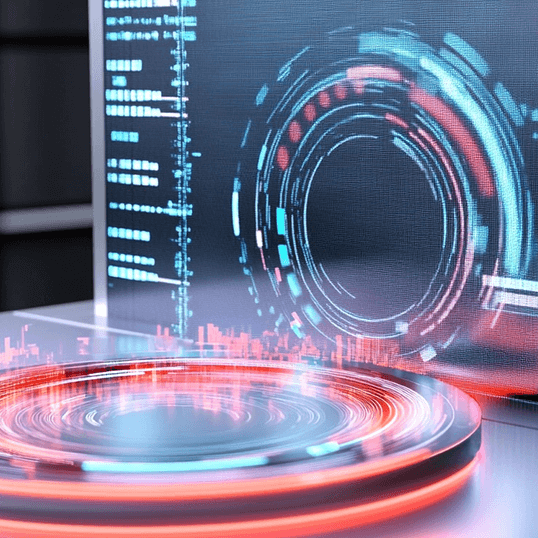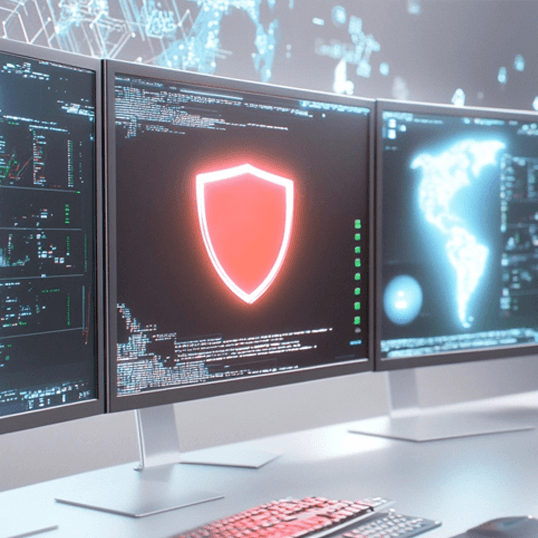In today’s fast-evolving cyber threat landscape, traditional security measures are no longer sufficient to protect organizational assets. Businesses—especially those without robust in-house cybersecurity teams—need more dynamic, proactive solutions. This is where MDR (Managed Detection and Response) tools come into play. They combine advanced technologies and expert-led services to detect, investigate, and respond to threats in real-time.
This article dives deep into what Managed Detection and Response tools are, their functionality, how they differ from other cybersecurity solutions, and why they’re essential for modern organizations.
What Are MDR Tools?
MDR tools are a suite of advanced cybersecurity technologies used by MDR service providers to monitor, detect, and respond to malicious activities across an organization’s IT infrastructure. These tools form the backbone of the Managed Detection & Response service model, which offers 24/7 threat hunting, monitoring, and incident response.
MDR providers typically deploy technologies like:
- Endpoint Detection and Response (EDR)
- Security Information and Event Management (SIEM)
- Network Intrusion Detection Systems (NIDS)
- Security Orchestration, Automation, and Response (SOAR)
- Threat Intelligence Platforms
These tools are operated by seasoned cybersecurity analysts who analyze data, eliminate false positives, and take swift action to contain and remediate threats remotely.
Functionality of Tools
1. Real-Time Monitoring and Threat Detection
MDR tools continuously monitor networks, endpoints, cloud environments, and applications. They collect telemetry data and use behavior analytics, threat intelligence, and machine learning to detect anomalies and potential threats—both known and unknown (zero-day threats).
2. Advanced Threat Hunting
Unlike traditional solutions, Managed Detection and Response doesn’t wait for alerts to act. With tools like EDR and SIEM, MDR providers proactively hunt for signs of compromise. They look for subtle indicators that often go unnoticed in standard security setups.
3. Automated and Manual Response
Upon detecting a threat, MDR tools can initiate automated responses—like isolating endpoints or disabling user accounts. At the same time, human analysts validate alerts and coordinate tailored manual responses, ensuring minimal disruption and quick containment.
4. Centralized Visibility
MDR tools aggregate data from various sources to provide a unified view of the organization’s security posture. This allows analysts to correlate events across systems, detect patterns, and gain context necessary for accurate incident response.
5. Threat Intelligence Integration
MDR tools leverage real-time threat intelligence feeds to stay updated with emerging attack vectors. They can use this intelligence to enrich logs, prioritize alerts, and detect threats early.
Key Technologies Behind MDR Tools
🔍 Endpoint Detection and Response (EDR)
EDR tools monitor endpoints—such as workstations, laptops, and mobile devices—for malicious activity. They log user behavior, analyze suspicious files, and help detect lateral movement within the network.
🌐 Security Information and Event Management (SIEM)
SIEM collects and correlates data from logs, firewalls, and applications. It generates alerts based on complex rules and enriches data using threat intelligence for advanced analytics.
🧠 SOAR (Security Orchestration, Automation, and Response)
SOAR tools automate workflows and incident responses using pre-defined playbooks. They enable rapid containment of threats without human intervention, enhancing response speed and reducing analyst workload.
🕸️ Network Intrusion Detection Systems (NIDS)
NIDS monitor network traffic and detect unusual patterns, such as policy violations, port scans, or suspicious IP addresses. These tools are often combined with Intrusion Prevention Systems (IPS) for enhanced protection.
🎯 Deception Technology (e.g., Honeypots)
Honeypots mimic vulnerable systems to lure attackers. Once an attacker interacts with them, they generate alerts and help analysts understand attacker behavior in real-time.
Why Are Managed Detection and Response Tools Important?
✅ Fills the In-House Security Gap
Not every organization can afford a fully staffed Security Operations Center (SOC). MDR tools, managed by cybersecurity experts, offer enterprise-grade protection without the cost and complexity of building an internal team.
🔒 Reduces Alert Fatigue
Security teams are often overwhelmed by a flood of alerts. MDR tools help filter out noise, eliminate false positives, and escalate only the most critical threats, allowing organizations to focus on what truly matters.
⚡ Rapid Threat Response
Speed is critical during a cyberattack. MDR tools provide near-instantaneous response through automated playbooks and expert-guided manual actions—limiting damage and reducing downtime.
🌍 Unified Threat Visibility
MDR aggregates data from across the organization’s digital ecosystem, including on-premises and cloud systems. This broad telemetry helps identify sophisticated, multi-stage attacks that might otherwise go unnoticed.
📈 Scalability and Adaptability
As businesses grow, so does their attack surface. Managed Detection and Response services, powered by scalable tools, adapt to your organization’s evolving security needs, including changes in infrastructure, compliance, or threat profiles.
MDR vs. Other Security Solutions
MDR vs. MSSP (Managed Security Service Providers)
While MSSPs focus on monitoring and alerting, they often do not investigate or respond to threats. MDR goes beyond by proactively hunting threats and responding to incidents in real-time.
MSSP = Alerting
MDR = Alerting + Investigation + Response
MDR vs. EDR
EDR secures individual endpoints. MDR incorporates EDR but also brings in network, cloud, and identity telemetry for a more holistic defense strategy.
EDR = Endpoint Focus
MDR = Environment-Wide Security
MDR vs. SIEM
SIEM tools collect and analyze log data. MDR leverages SIEM but adds a human element and orchestrated response, bridging the gap between visibility and action.
SIEM = Visibility
MDR = Visibility + Action
Benefits of MDR Tools: Why They Matter
- Enhanced Security Posture: Proactive monitoring, hunting, and response help prevent breaches and reduce dwell time.
- Faster Incident Response: MDR tools enable swift containment and remediation.
- Cost Efficiency: Eliminate the need for expensive SOC infrastructure and expert hires.
- Operational Efficiency: Reduces false positives and automates routine responses.
- Access to Expertise: Get 24/7 access to experienced security analysts.
- Compliance Support: MDR services often help meet regulatory requirements (e.g., HIPAA, PCI DSS).
Choosing the Right MDR Provider
When evaluating MDR providers, look for:
- Depth of Expertise: Proven track record in handling advanced threats.
- Technology Stack: Tools like EDR, SIEM, SOAR, and threat intelligence integration.
- Response Capabilities: Rapid, remote containment and remediation.
- Customization: Ability to tailor services to your organization’s needs.
- Integration: Smooth compatibility with existing systems.
- SLAs and Support: Guaranteed response times and strong client support.
- Transparency: Clear reporting and communication throughout the engagement.
Final Thoughts
In a world where cyberattacks are becoming increasingly complex and frequent, MDR tools offer an efficient, scalable, and expert-driven solution to securing your organization. They provide end-to-end threat detection, investigation, and response—backed by cutting-edge technologies and skilled professionals.
Whether you’re a small business looking to bolster your defenses or a large enterprise seeking advanced threat protection, integrating MDR tools into your security strategy can offer the peace of mind and resilience you need in today’s digital age.
At CyberProof, we help global enterprises embrace digital transformation with confidence, not fear.
As businesses transition to cloud-native environments for greater agility, new cyber risks emerge.
Our mission is to safeguard your evolving operations against these dynamic threats.
FAQs
What are MDR tools?
Managed Detection & Response tools are specialized cybersecurity technologies and services used by MDR providers to monitor, detect, investigate, and respond to cyber threats in real-time. These tools include components like EDR (Endpoint Detection and Response), SIEM (Security Information and Event Management), SOAR (Security Orchestration, Automation, and Response), and threat intelligence platforms.
How do MDR tools differ from traditional antivirus software?
Unlike traditional antivirus software, which relies on signature-based detection, MDR tools utilize behavioral analytics, machine learning, and real-time monitoring to proactively identify sophisticated threats. They are part of a larger managed service that includes human expertise for incident investigation and response.
Why are MDR tools important for small and mid-sized businesses?
Small and mid-sized businesses often lack the in-house resources to maintain a full-scale security operations center (SOC). MDR tools provide access to advanced threat detection and expert response capabilities without the overhead cost, helping these businesses protect their digital assets efficiently and affordably.
What are the key components of MDR tools?
Core components of MDR tools include:
- Endpoint Detection and Response (EDR)
- Security Information and Event Management (SIEM)
- Network Intrusion Detection Systems (NIDS)
- Threat Intelligence Integration
- SOAR platforms for automation
- Security analytics and telemetry collection tools
These components work together to detect, prioritize, and respond to threats across an organization’s IT environment.
How do MDR tools enhance incident response?
MDR tools enable rapid incident detection and response through automated alerts, threat containment features (like isolating affected endpoints), and real-time forensic investigation. These tools allow MDR analysts to quickly neutralize threats before they cause significant damage, minimizing downtime and data loss.
Can MDR tools integrate with existing security infrastructure?
Yes, most modern MDR tools are designed to integrate seamlessly with existing infrastructure such as firewalls, SIEM systems, cloud platforms, and endpoint protection software. This ensures that organizations can enhance their current security posture without having to overhaul their existing setup.
What industries benefit most from MDR tools?
All industries can benefit from MDR tools, but they are especially valuable in sectors with high data sensitivity or regulatory requirements, including:
- Healthcare (HIPAA compliance)
- Finance (PCI-DSS and FFIEC guidelines)
- Retail and eCommerce
- Education
- Manufacturing
- Government agencies
These industries face heightened risks and must maintain strong cyber resilience.
How do MDR tools help reduce alert fatigue?
MDR tools use automation, correlation engines, and expert analysis to filter through vast volumes of alerts. They prioritize actionable threats and eliminate false positives, enabling internal teams to focus only on critical incidents. This significantly reduces “alert fatigue” and enhances operational efficiency.
Are MDR tools suitable for cloud environments?
Absolutely. Many MDR tools are cloud-native or cloud-compatible, allowing them to monitor activity across hybrid, on-premises, and cloud infrastructures (such as AWS, Azure, or Google Cloud). They help secure cloud workloads, monitor user access, and detect threats like misconfigurations and privilege escalations.













